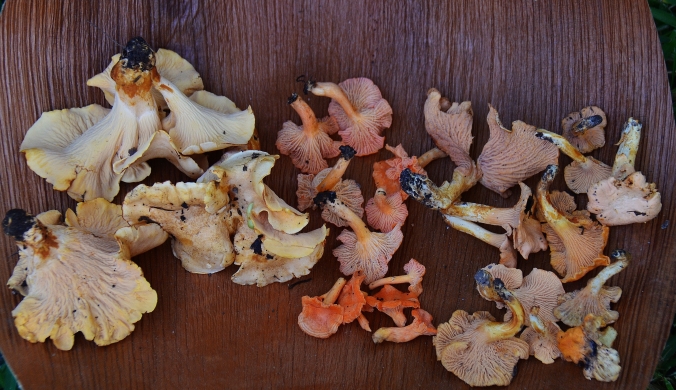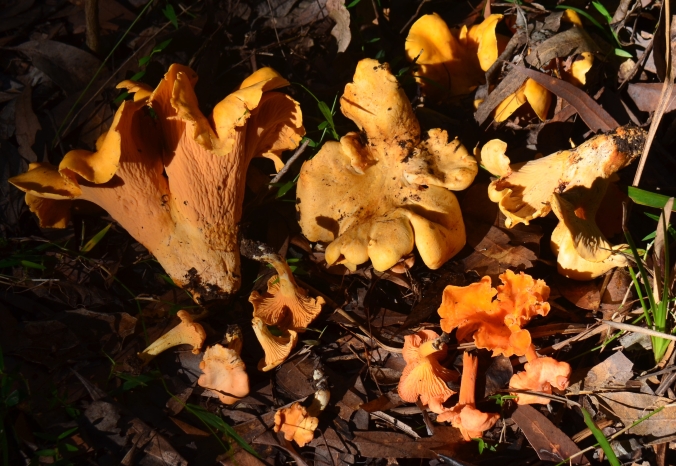
Australian Smooth Chanterelle
These Australian smooth chanterelles are found in NENSW and SEQLD at least tho may be more widespread, they are not common but can fruit heavily where they do grow. They seem to like intact eucalypt forest or the euc rain forest cross overs that we get in this area. I find them in April and May after good rain. They seem to fruit in the same spots year after year. As far as I can tell its an undescribed species or group that is either in the Cantharellus or Gloeocantharellus genus. A couple of people have had dna done and the results did not find a match, here is a voucher number for the sample lodged by the Victoria hebarium KP311393. No one that I have asked in the Aussie mushroom community has much info on them. QMS has got a couple tentative IDs Cantharellus ochraceoravus based on this paper on Australian chants which is just a review of the literature. QMS also calls them Gloeocantharellus ‘soloris’ I’m not sure what they base this on.

Australian Smooth Chanterelle
Their folds become more evident as they mature but never become the false gills of a regular chant, they are also massive in comparison to the other chant species I have seen, the largest one I found weighed about 130g. Their flesh is solid and firm. They often branch as you can see in the photo above. I have eaten them a couple times, they have great texture but not much in the way of flavor. Dry frying them over medium heat is a good technique to maximize flavour. I have also pickled them after dry frying, I found them very tasty done this way. I would love to share more about this species but this is about all I have, maybe just one more photo! If you want to read more about our Aussie chants please take a look at my other articles that can be found via this list of edibles.

Australian Smooth Chanterelle







